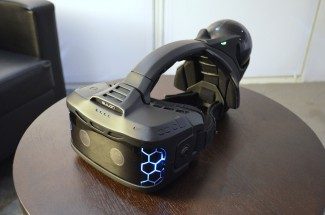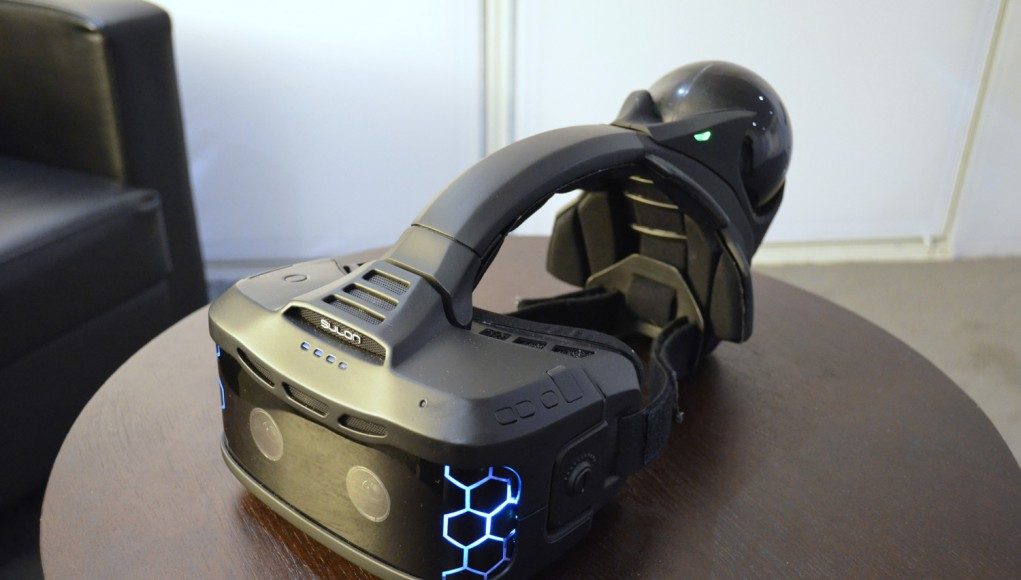Sulon had an impressive presence at CES 2015, their sizeable booth on the show floor accompanied by eye-catching prototype headsets clearly designed to announce to the world that they’d arrived. Their product, an AR/VR headset named the ‘Cortex’, has an interesting ‘mixed reality’ approach and practical uses of computer vision. Ben Lang sits down with Don Henderson from Sulon to find out more.
Listen to this story (experimental):
Augmented and virtual reality was everywhere at CES as our recent video montage illustrated quite effectively. What’s more, the examples of companies approaching immersive technologies from fresh perspectives was encouraging. FOVE’s VR headset for example is an exciting foray into advanced eye tracking, a technology that will surely be crucial to VR headsets in the future. Sulon was present too at CES 2015 with its own vision of what the future of immersive entertainment will look like. We actually reported on Sulon way back in 2013 when they described their vision for an ambitious headset which is finally due to be realized as a development kit later this year.

See Also: Take a Whirlwind Tour of VR/AR at CES 2015 in 6 Minutes (video)
Sulon’s ‘Cortex’ VR headset is an entirely self contained device that’s capable of providing a straight VR or mixed reality experience which the company is calling ‘augmented virtual reality’. As Henderson himself tells Ben Lang, describing what the device does isn’t always straightforward.
Sulon are not talking in detail about the Cortex’s hardware just yet, but Henderson was able to share an overview, “…it has a sensor built into it that allows it to scan the environment immediately when you put it on, within 20m in all directions,” he said. “…therefore it can sense what the environment is, scan it out and display to you what is in the room and also then convert that into a virtual reality experience as well.” As to what kind of power the untethered VR headset can offer, “The headset has many processors built into it, so you don’t plug into an external device like a PC or a laptop etc. which allows you to walk around.” The Cortex also houses dual, front-facing cameras that allow input through hand recognition.
The Cortex is certainly attempting to differentiate itself in terms of the types of experiences it can to offer. Henderson tells us “…there’s one main sensor that as I say continually scans your environment, so you don’t need to be in a room, you can basically use it outside”, an interesting if perhaps potentially hazardous use case.
Ben Lang will be sharing his hands-on experiences with the Cortex soon. There were just two short demos to try at CES this year, one gaming focused the other aimed at business use, but the company has its sights set on gaming in the very near future “We’ll have more to announce especially on the gaming side at GDC,” Henderson teased.
Road to VR be at GDC in March to find out more.







